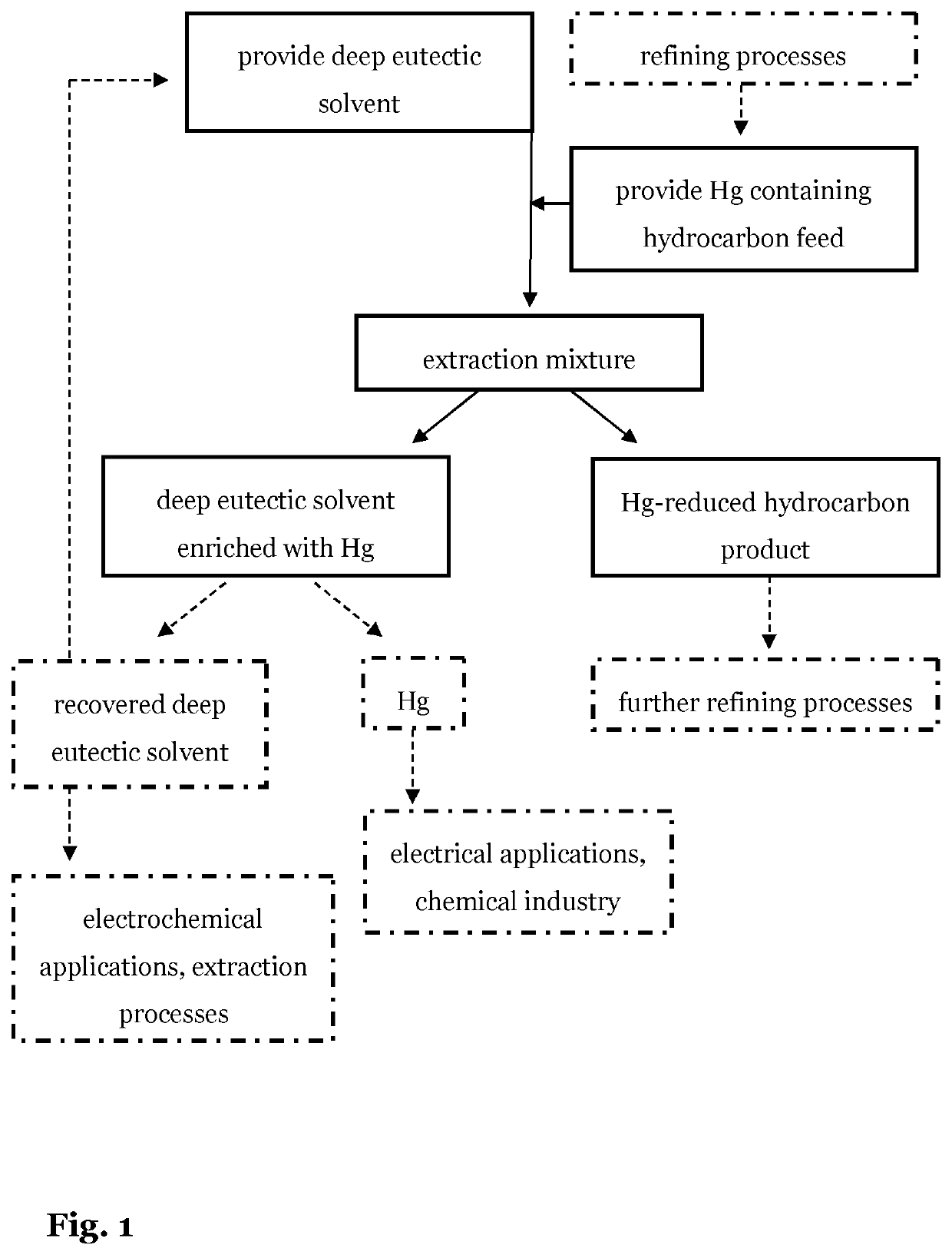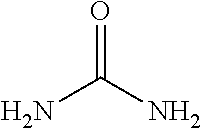Mercury capture from hydrocarbon fluids using deep eutectic solvents
- Summary
- Abstract
- Description
- Claims
- Application Information
AI Technical Summary
Benefits of technology
Problems solved by technology
Method used
Image
Examples
example 1
on of Deep Eutectic Solvents
[0063]Several DESs for extracting mercury were tested:
[0064]“DES-1”: choline chloride:urea
[0065]“DES-2”: choline chloride:ethylene glycol
[0066]“DES-3”: choline chloride:levulinic acid
[0067]“DES-4”: betaine:levulinic acid
[0068]In all cases the molar ratio was 1:2. DES-4 was chosen to test the influence of replacing a salt-based HBA with a zwitterionic HBA, i.e. with betaine.
[0069]The chemical compounds, along with their sources and purities are reported in Table 1. The choline chloride was dried under vacuum prior to use. The other chemicals were used as obtained.
TABLE 1Chemicals for the preparation of DESs.ChemicalPurity (wt %)SourceCholine chloride≥98Sigma-AldrichUrea≥98Sigma-AldrichEthylene glycol≥99.8Sigma-AldrichLevulinic acid≥98Sigma-AldrichBetaine≥98Sigma-AldrichDodecane≥99MerckMercuryExtra pureMerck
[0070]The molecular structures of the constituents for the four DESs are provided in Table 2. The DESs (DES1 to DES4) were prepared in 50 g batches usin...
example 2
xtraction from Hydrocarbon Feed
[0071]N-dodecane was used as a model system for aliphatic hydrocarbons in petroleum. 25 mL of n-Dodecane (>99% purity) was saturated with elemental mercury (extra pure) at ambient conditions to a concentration of approximately 4000 μg kg−1. The saturated n-dodecane solution was added to the DESs using a 1:1 or a 2:1 solvent-to-feed mass ratio. The mixtures were initially mixed for a short time using a Vortex mixer followed by shaking the solutions for 2 h using an incubating shaker (IKA KS 4000 i) at temperatures of 303.15 K or 333.15 K. The mixtures were left to settle for 30 min until liquid-liquid coexistence was visually observed with the n-dodecane and DES being the upper and lower phases, respectively. A sample from the n-dodecane phase was taken using a syringe without disturbing the equilibrium interface. The n-dodecane sample was then analyzed for its mercury content using a Milestone Direct Mercury Analyzer DMA-80 pyrolysis / AA analyzer. A sam...
PUM
 Login to view more
Login to view more Abstract
Description
Claims
Application Information
 Login to view more
Login to view more - R&D Engineer
- R&D Manager
- IP Professional
- Industry Leading Data Capabilities
- Powerful AI technology
- Patent DNA Extraction
Browse by: Latest US Patents, China's latest patents, Technical Efficacy Thesaurus, Application Domain, Technology Topic.
© 2024 PatSnap. All rights reserved.Legal|Privacy policy|Modern Slavery Act Transparency Statement|Sitemap



